By Emily Lakdawalla (The Planetary Society)
Books for little ones (to age 7 or so)
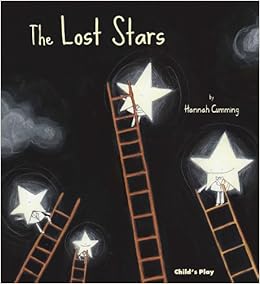 |
The Lost Stars by Hannah Cumming
|
A charming fable with funny illustrations about how people in the cities forgot there were stars in the sky, so the stars go to take a vacation, until people miss them and go to look for them. It's a story about dark sky awareness that isn't overly preachy, and would be a fun read-aloud book for young kids.
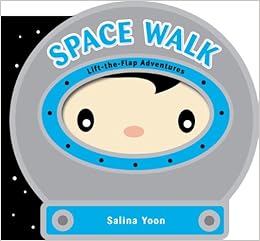 |
Space Walk, by Salina Yoon.
|
Much like Eight Spinning Planets, it features a rhyming couplet for each planet. You have to lift a flap with a colourful drawing of a planet on it to read the text, which might make it challenging for children who insist on closing the flap before you're done reading. (Believe me, I've been there.) But it makes for a good parent-kid reading dynamic: you have to tell your kid to "open Saturn" and then you can read the cute rhyme about it: "What makes Saturn look so nice? Its many moons and rings of ice."
Books for young students (6-9ish)
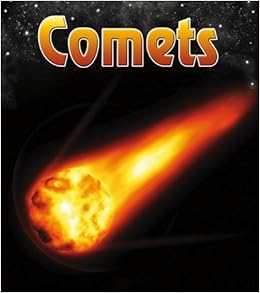 |
Comets, by Nick Hunter
|
This is a non-fiction book that provides a lot of information accompanied by well-selected photos, in very manageable portions on each page. I like that it doesn't stuff a lot of factual information into lengthy, dense paragraphs on the final two pages. Instead, the author has done an excellent job of selecting facts appropriate for younger students and putting it all in a couple of carefully crafted sentences for each page, without overwhelming the page with text. Comets includes information about comets in general as well as a page spread each on comets Halley and Shoemaker-Levy, on Stardust and Deep Impact. There are three other books in the series, all of them good: Eclipses, Northern Lights, and Stars and Constellations. (I don't know why the Comets one has what appears to be a flaming fireball on the cover. Ignore that and enjoy the book.)
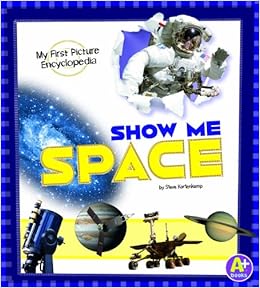 |
Show Me Space: My First Picture Encyclopedia, by Steve Kortenkamp
|
An illustrated encyclopaedia of space terminology. Each two-page spread features a different category of space terms (e.g. "space rocks," "many more moons," and "the life of a star"). Eight to twelve words are given very short definitions on each page, each word accompanied by a well-selected photo. I particularly like this book because you won't find many appropriate for younger readers that include the names of big Kuiper belt objects (it lists Pluto, Makemake, Eris, and Haumea on the page about dwarf planets) and big solar system moons. Some of the terms are pretty advanced (cryovolcano, Seyfert Galaxy) but the book also defines day and night in astronomical terms -- I think it's a good balance of tough words and simpler ones with most being in the middle, a great way to broaden a kid's space vocabulary. (The publisher has this listed as a book for kids age 4-6, but I think that's a little young for the words and concepts it contains.)
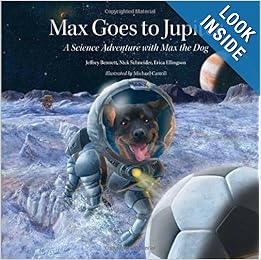 |
Max Goes to Jupiter, by Jeffrey Bennet, Nick Schneider, and Erica Ellingson
|
Set in a hypothetically near future with a space elevator and disk-shaped ships with centrifugal artificial gravity, and follows humans' first peaceful expedition to the moons of Jupiter. It's probably the "hardest" sci-fi book I've seen for kids this age: it presents a lot of the kinds of technology that futurists imagine will one day make human travel into space routine, never resorting to magic. The humans are accompanied by Max the dog, the grandson of the Max that appears in Bennet's earlier books: Max Goes to the Space Station, Max Goes to the Moon, and Max Goes to Mars. These books are dense with factual information about the realities and challenges of exploring the solar system, but the facts are linked together with an exploratory narrative. Each page has supplementary text that discusses the level of realism of the future explored in the story.
Books for middle schoolers (8-13ish)
 |
Awesome Space Robots, by Michael O'Hearn
|
Opens with the scene of Neil Armstrong stepping on the Moon for the first time -- but then says that robots got to the Moon much earlier. It describes how engineers consider the problems we want robots to solve, and the scientific questions we want answered, before designing and testing their robots, and it talks about some of the challenges about designing robots for space, all with excellent pictures. I, of course, think space robots are awesome, and I'm happy to see Spirit, Curiosity, Hubble, Canadarm 2, Voyager, Cassini, Viking, Pathfinder, Pioneer 10, and MAVEN all make appearances in images, and many more are mentioned in the text. All in all, an excellent overview of robotic exploration for kids.
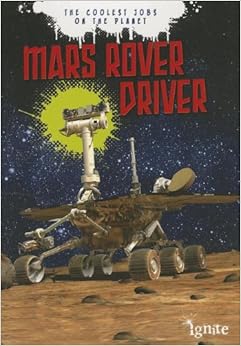 |
Mars Rover Driver: The Coolest Jobs on the Planet, by Scott "@marsroverdriver" Maxwell with Catherine Chambers
|
A really fun first-person profile of, well, a Mars rover driver. It's not exactly a biography, more a book of vignettes and facts ranging from his schooling and career path to "Did you know?" facts about different space gizmos to "Note to self" items about things he learned on the job. As such, it's a bit scattered, but the short, self-contained nuggets on each page would make this book an excellent one to put in front of a reluctant reader, and taken together it really provides a lot of insight into what makes the work of a software developer on a space mission fun and challenging. My main complaint about the book is with the photo selection -- there are many places where photos from the Curiosity mission are paired with text about Spirit and Opportunity, and other odd choices. And, particularly in a book about careers, I would have liked to see at least one woman or person of colour in one of the several photos containing humans.
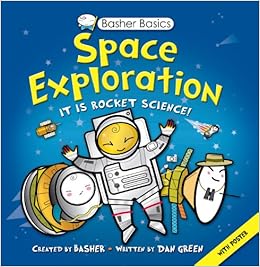 |
Basher Basics: Space Exploration
|
This year my daughter loves the Basher science series, reading each book over and over again. It's typical of the series, presenting space robots and phenomena as fun, cartoon-ized characters with distinct personalities, and my daughter has eaten it up. I do have to say I'm disappointed in its length: at 64 pages it's only half as long as earlier titles, which means that there's hardly room to mention more than a handful of space missions by name. It's not much cheaper than the 128-page titles, either. "Basics" tips you off that it's a 64-page book; "Basher Science" books are longer. I would have loved to see a cartoony treatment of more of my robot friends in space, and a 128-page version would have allowed the author (Dan Green) to make a pretty exhaustive list. If you don't have any books in the Basher series yet, go with Basher Science: Astronomy , which profiles as many space missions. (I checked: there is overlap in cartoon drawings, but at least they did not self-plagiarize the text.) All that being said, my daughter was pretty stoked to see Space Exploration, so it's a good addition to an existing Basher collection. She recommends Basher Basics: Weather and Basher Science: Technology, too.
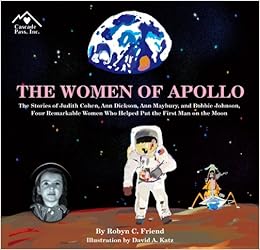 |
The Women of Apollo, by Robyn Friend
|
Tells of biographies of four women who served as engineers during the Apollo program: Ann Dickson, Ann Maybury, Bobbie Johnson, and Judith Love Cohen. Each had a different path to her engineering career, and three of the four paused their careers to have children and then returned to work on Apollo. Several had parents who disapproved their educational paths, but they did it anyway, and succeeded. I like how these biographies show different paths to making important contributions to a grand program -- I can see myself as a girl reading these stories, trying on the personalities they explore, saying yes--that's me; no--I wouldn't do it that way, all the while imagining myself an engineer on a space program, figuring out the trajectory to the Moon or helping save the lives of the Apollo 13 astronauts. A chunk of the back of the book is devoted to somewhat random "fun facts" -- I wish there had been a fifth biography instead. I also dislike the illustrations, which are ugly and seem to have been produced in Microsoft Paint; photographs would have been a much better choice.













